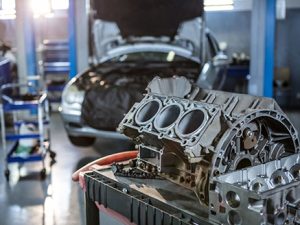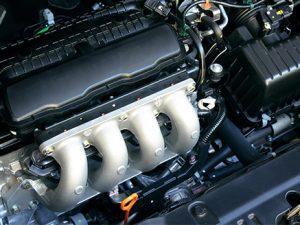Table of Contents
Types of Car Engines

Car engines come in various types, primarily distinguished by the kind of fuel they use and their configuration. Here are some common engine types:
- Internal Combustion Engine (ICE): This is the most common type of engine, which uses gasoline or diesel to power vehicles. It operates by igniting fuel inside the engine, causing a series of explosions that push the pistons.
- Electric Engine: Unlike ICEs, electric engines use electricity stored in batteries to power vehicles. They are efficient, producing less pollution and fewer emissions.
- Hybrid Engine: Combines an internal combustion engine with an electric engine to improve fuel efficiency and reduce emissions.
- Hydrogen Fuel Cell Engine: Uses hydrogen gas to power electric motors in vehicles.
Table: Comparison of Engine Types
| Engine Type | Fuel Source | Efficiency | Emissions |
|---|---|---|---|
| Internal Combustion Engine | Gasoline/Diesel | Moderate | High |
| Electric Engine | Electricity | High | Low |
| Hybrid Engine | Gasoline & Electricity | High | Moderate |
| Hydrogen Fuel Cell Engine | Hydrogen | High | Very Low |
How Car Engines Work

A car engine works by converting energy from fuel into mechanical energy that propels the vehicle. Here’s a basic rundown of the process:
- Intake: The engine takes in air and fuel, preparing it for combustion.
- Compression: The mixture is compressed, making it more volatile and increasing its explosive power.
- Combustion: A spark ignites the compressed air-fuel mixture, causing a mini-explosion that pushes the piston down, turning the crankshaft.
- Exhaust: Spent gases are expelled from the engine through the exhaust valve.
Components of a Car Engine
Car engines are complex machines with many components. Here are the key parts:
- Pistons: Move up and down inside the cylinders, driven by explosions from the combustion process.
- Cylinders: House the pistons and a chamber where fuel combustion occurs.
- Crankshaft: Converts the vertical motion of the pistons into rotational motion.
- Camshaft: Opens and closes the engine’s valves to allow the intake of air-fuel mixture and release exhaust gases.
- Valves: Allow air/fuel in and exhaust out; open and close in time with the pistons.
- Connecting Rod: Links the pistons to the crankshaft.
Table: Engine Components and Their Functions
| Component | Function |
|---|---|
| Pistons | Move to create compression and power strokes |
| Cylinders | Contain the pistons and combustion chamber |
| Crankshaft | Converts piston movement into rotary motion |
| Camshaft | Operates the opening and closing of valves |
| Valves | Intake of air-fuel mixture and exhaust release |
| Connecting Rod | Transfers motion from piston to crankshaft |
For a detailed breakdown of each component, you can visit our Engine Parts section.
Common Symptoms of a Bad Rocker Arm or Tappet
The valve train of an internal combustion engine is a complex system where many parts must work in perfect harmony. Two of the most important components in this mechanism are rocker arms and tappets (lifters). They transfer the camshaft’s rotational motion into linear motion to open and close the engine’s…
Hydraulic vs. Solid Tappets: What’s the Difference?
In internal-combustion engines, especially pushrod (OHV) engines, tappets — also called valve lifters — play a critical role: they translate the motion of the camshaft into motion that opens or closes the engine’s valves. But not all tappets are built the same. Broadly speaking, there are two major categories: hydraulic…
What Are Tappets and Rocker Arms? Understanding Their Role in Your Engine
Modern internal-combustion engines are full of moving parts — pistons, camshafts, valves — and among the unsung heroes of the valve train are the humble tappets and rocker arms. Although small, these components play a critical role in translating the camshaft’s motion into the opening and closing of the intake…
Step-by-Step Guide: How to Inspect and Replace Finger Followers
Proper maintenance of a car’s valvetrain system is vital for smooth engine performance and efficiency. Among the essential components ensuring accurate valve operation are finger followers — small but crucial levers that transmit motion from the camshaft lobes to the valves. Over time, these parts can wear down or become…
Common Symptoms of Worn or Damaged Finger Followers
The smooth operation of your vehicle’s engine depends heavily on the condition of its valvetrain system — the network of components responsible for opening and closing the intake and exhaust valves with precision. Among these parts, finger followers play a crucial role. They act as intermediaries between the camshaft lobes…
The Role of Finger Followers in the Valvetrain System
In modern internal combustion engines, precision and efficiency are everything. Every component plays a critical role in ensuring smooth operation, power delivery, and fuel economy — and one of the most vital, yet often overlooked, parts is the finger follower. The finger follower is an integral part of the valvetrain…
Finger Followers Explained: How They Work in Modern Engines
Modern internal combustion engines rely on a precise balance of mechanical efficiency and reliability. One small yet crucial component that makes this possible is the finger follower — a vital part of the valvetrain system responsible for transferring motion from the camshaft to the engine valves. Finger followers may be…
Oil-Lubricated vs. Oil-Free Engine Compressors: Which Is Better for Your Vehicle?
The compressor plays a critical role in your vehicle’s air conditioning and air suspension systems. It ensures proper air pressure, temperature regulation, and overall performance. When choosing a replacement or upgrade, one of the key decisions is whether to go with an oil-lubricated or oil-free compressor. Both types have distinct…
Troubleshooting Compressor Noise: What Different Sounds Really Mean
A vehicle’s air conditioning or air suspension compressor plays a crucial role in maintaining comfort and performance. However, when it begins producing unusual noises — from rattling and buzzing to grinding or hissing — it’s often a clear sign that something isn’t right. Understanding what these sounds mean can help…
Common Symptoms of a Failing Engine Compressor and How to Fix Them
The engine air compressor is one of the most important components in your vehicle’s performance system. It ensures that enough compressed air is available for combustion or auxiliary systems such as air brakes, suspension, and pneumatic controls. However, like all mechanical parts, compressors can wear out or fail over time….